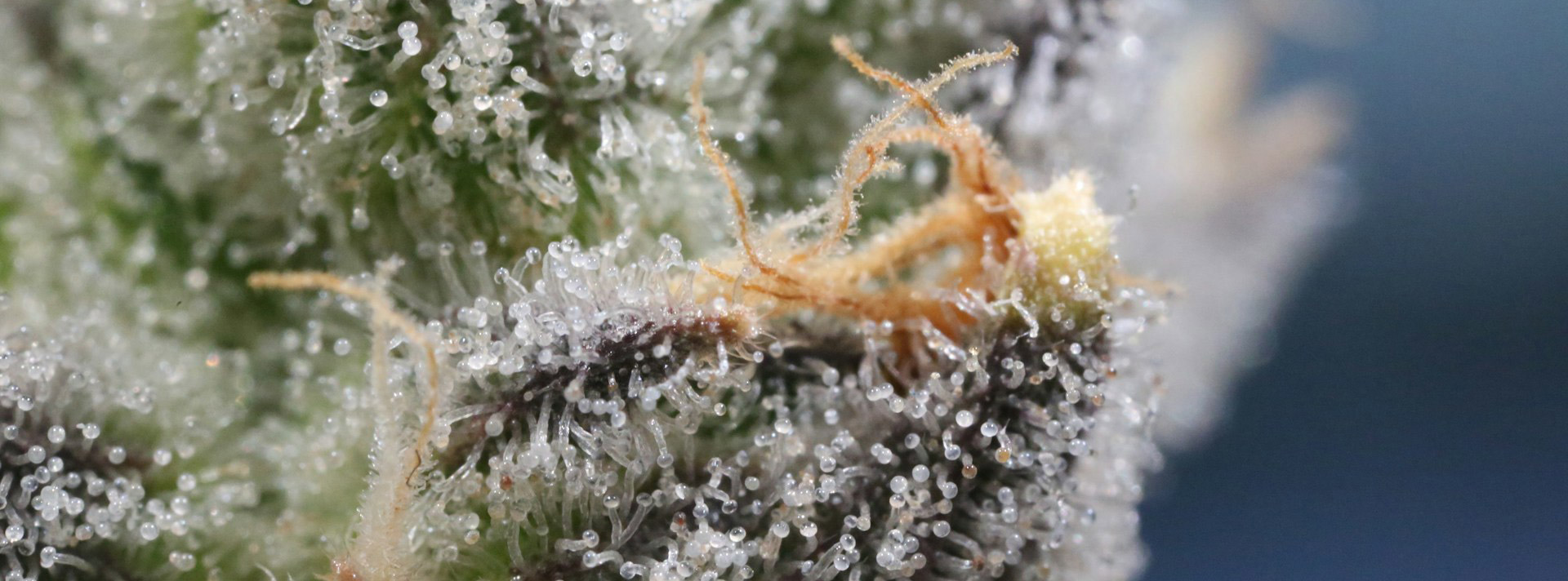Cannabinoids and Terpenes
How Cannabis Works with Your Body
The endogenous cannabinoid system (ECS) is a group of receptors that regulate essential bodily functions throughout the human body, brain, and central and peripheral nervous systems. The ECS maintains homeostasis, a process that regulates hunger, mood, pain, and insomnia, among others. All animals, including humans, have an ECS.
Its discovery in the early 1990s shed light on how endogenous cannabinoids (endocannabinoids) produced by the human body and phytocannabinoids (cannabinoids) produced by cannabis interact with our bodies via ECS receptors.
The receptors researched the most are receptors CB1 and CB2. CB1 receptors are primarily found in the central nervous system. CB2 receptors are mostly found in the immune cells. CB1 is the most abundant receptor.
The main cannabinoids found in cannabis flower plant resin are ∆9-tetrahydrocannabinol (THC), which gets you “high,” and cannabidiol (CBD), which does not get you high. THC binds with CB1 and CB2 receptors, allowing for a wide range of positive (e.g., euphoria, pain reduction) and negative (e.g., anxiety, paranoia) effects.
CBD doesn’t easily bond with either CB1 or CB2 receptors. It can act as an antagonist at the receptor and help mitigate some of the adverse effects of THC.
Cannabinoids
Cannabinoids are compounds produced by the cannabis plant that interact with the endocannabinoid system in the human body. They are in sticky, resinous glands called trichomes, primarily found in cannabis flowers. There are over 100 cannabinoids in cannabis; THC is the most prevalent.

Cannabinoids can act like “vital nutrients” when the ECS is depleted or off balance. They elicit various effects on the body and brain when interacting with the human endocannabinoid system. They can make you feel high, manage pain, help you sleep, reduce inflammation, and counteract nausea, among others.
The cannabinoids you are most likely to encounter in products currently on the market at dispensaries are THC, CBC, CBD, CBG, CBN, and THCV.
THC

∆9-tetrahydrocannabinol. Psychoactive. The most prevalent cannabinoid in the cannabis plant and, likely, the best known. It is responsible for the “high” consumers experience and is used for managing pain and nausea.
CBC

Cannabichromene. Non-psychoactive. It is used to address inflammation and depression. Promising research shows that CBC, like THC and CBD, can promote neurogenesis, the process by which nervous system cells and neurons grow and develop in the brain.
CBD

Cannabidiol. Non-psychoactive. It is known for its calming and anti-inflammatory effects and relieving depression. It is approved by the FDA to treat epilepsy.
CBG

Cannabigerol. Non-psychoactive. Cannabis consumers use CBG to treat glaucoma, inflammation, anxiety, insomnia, and pain.
CBN

Cannabinol. Mildly psychoactive. First discovered in 1896, studies have shown that CBN improved sleep in human subjects. Consumers report that it promotes quality sleep and reduces pain, and a 2005 study suggested that it could help delay the onset of amyotrophic lateral sclerosis (ALS).
THCV

∆9-tetrahydrocannabivarin. Non-psychoactive in lower doses. Commonly called the “diet weed” due to its appetite-suppressing effect, the data is inconclusive if this assessment is accurate. Research suggests that it may inhibit the less desirable effects of THC and could be helpful in treating diseases and disorders, including Parkinson’s disease and epilepsy.
Terpenes
In addition to containing high levels of cannabinoids, trichomes also house terpenes.
Terpenes are aromatic compounds believed to impact the effect and experience cannabis elicits when consumed. This impact is referred to as an ensemble effect or entourage effect. The ensemble effect is a theory that proposes the effects of cannabis are not solely dependent on one component, like a cannabinoid. Instead, the effects result from a synergy between all plant compounds occurring naturally in cannabis.
While the ensemble effect remains a theory and is still being debated, many cannabis users report qualitative benefits from terpenes, identifying specific terpenes that they find therapeutic and beneficial. Many growers test for dominant terpenes and include this information alongside THC and other cannabinoid content. Product manufacturers are adding or highlighting terpenes in their products.


